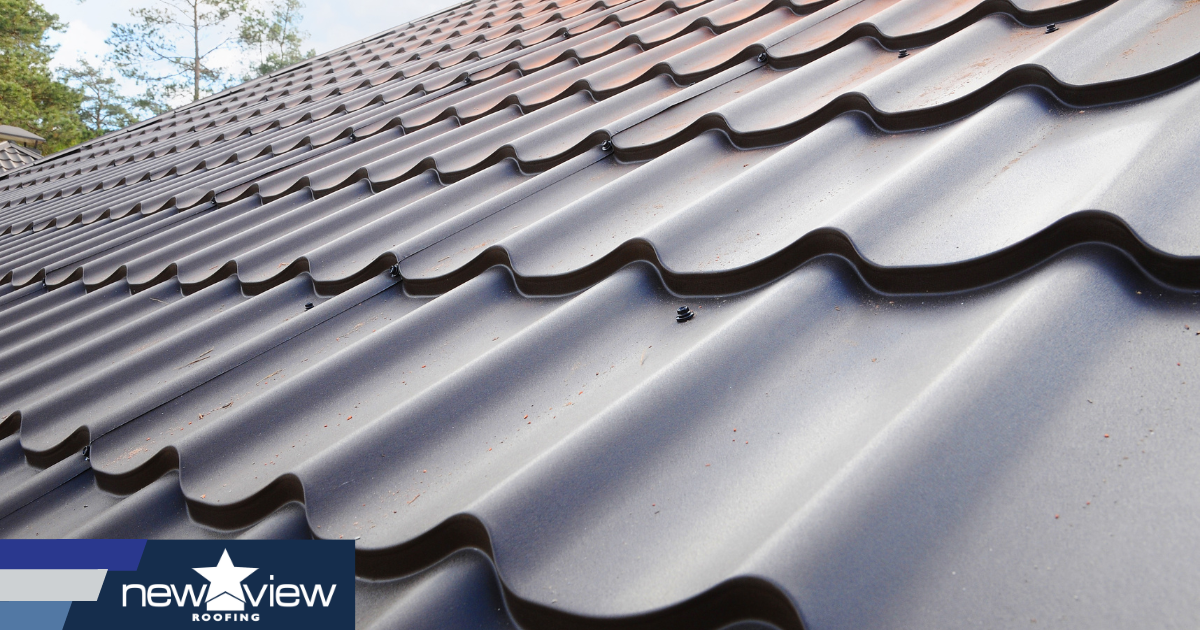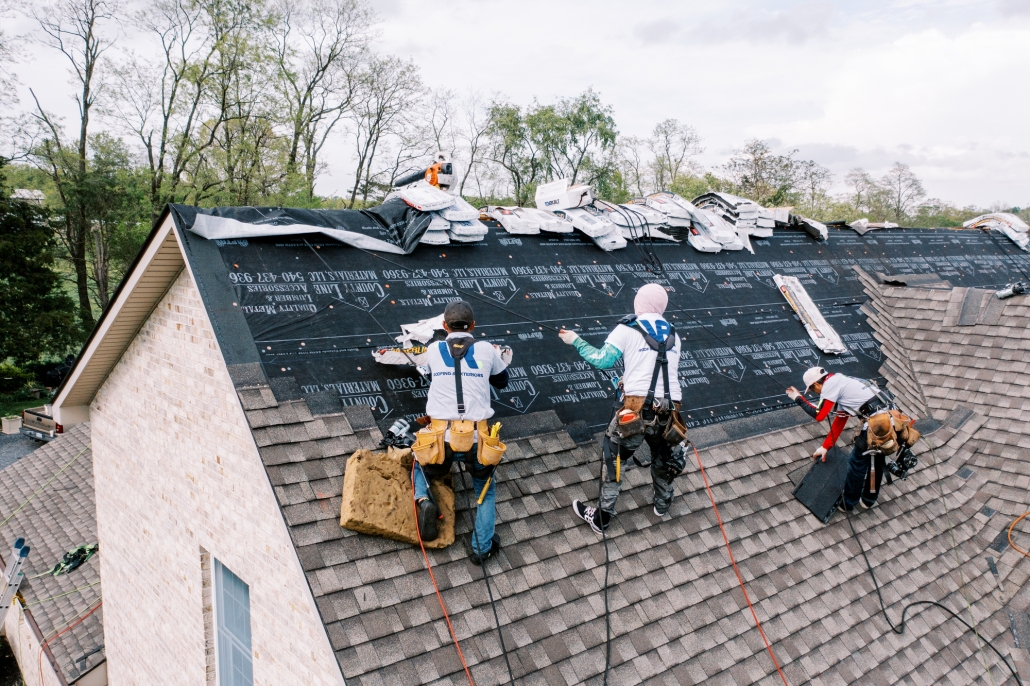Comparing Costs Amongst Roofing Companies in Gainesville Florida
Comparing Costs Amongst Roofing Companies in Gainesville Florida
Blog Article
Ideal Practices for Ensuring Correct Roof Covering Ventilation
Making sure appropriate roof ventilation is vital for the long life and efficiency of a roof covering system. A well balanced consumption and exhaust vent ratio, commonly 1:300, plays a pivotal duty, with consumption vents preferably positioned at the lower edge of the roofing for amazing air access and exhaust vents at the optimal for warm air leave. Routine evaluations to determine clogs and preserve clear air flow are critical. Additionally, keeping insulation away from vents is essential to avoid airflow constraint. Understanding these fundamental elements establishes the phase for even more in-depth insights right into installation and upkeep methods that can considerably enhance your roof's performance.
Understand Air Flow Basics
Effectively recognizing air flow fundamentals is essential for making certain the longevity and performance of roof. Efficient ventilation reduces dampness build-up and temperature extremes in the attic, both of which can result in considerable architectural damages gradually. A well-ventilated roofing helps in preventing typical concerns such as mold development, wood rot, and ice dams, which can compromise the stability of the roof products and the underlying frameworks.
The main objective of air flow is to promote the motion of air, permitting for a constant exchange between the exterior and interior environments. This balance is accomplished with a mix of consumption and exhaust vents that collaborate to keep ideal airflow. Intake vents, generally situated along the eaves or soffits, permit fresh air to enter the attic room area, while exhaust vents, frequently positioned at or near the roofing system ridge, enable warm, moist air to get away.
Key elements influencing the efficiency of roofing air flow include appropriate positioning, ample sizing, and ensuring that both intake and exhaust vents are unhampered. Normal inspection and maintenance are important to identify possible clogs, damage, or inadequacies in the air flow system, thereby guarding the roofing's efficiency and sturdiness.
Sorts Of Roofing Vents
Roofing vents play a critical duty in preserving reliable attic room air flow and, by extension, the total health and wellness of the roof system. Different sorts of roofing vents are offered, each with unique benefits customized to particular roofing requirements. Ridge vents, for instance, are set up along the roofing's height, enabling cozy, damp air to get away from the attic. They offer continual ventilation and blend effortlessly with the roofline, making them both efficient and cosmetically pleasing.

Soffit vents are mounted under the eaves and operate in tandem with roofing system vents to ensure a balanced intake and exhaust system. By allowing cooler air to enter from below, soffit vents promote the expulsion of warm air with upper vents. Gable vents, situated on the exterior walls of the attic, offer another reliable service, especially in homes with gable roofs.
Analyze Your Existing Air Flow

Following, think about the age and problem of your roof materials and air flow components. Older systems might not abide by present building codes or might have degraded over time, decreasing their efficiency. Conduct a complete exam to recognize any kind of signs of deterioration, such as corrosion, damage, or gaps that can compromise the system's efficiency.
Additionally, gauge the attic temperature level and moisture levels. High temperatures and moisture can suggest inadequate air flow - gainesville roofing companies. Utilize a hygrometer and thermometer to acquire accurate readings, comparing them with exterior problems. Persistent disparities suggest possible issues that need attending to.
Installation Best Practices
Effective installation of roof covering ventilation systems is extremely important for guaranteeing optimal efficiency and long life. Proper installation starts with recognizing the certain ventilation needs of the building and the roof it covers. This involves calculating the correct proportion of intake to wear down vents, typically adhering to the 1:300 guideline, which stipulates one square foot of air flow for every 300 square feet of attic room flooring space.

The positioning of vents is equally vital. Intake vents need to be mounted at the roof's reduced edge, frequently in the soffits, to enable amazing air to get in. Exhaust vents, on the various other hand, need to be installed near or at the roofing's optimal to help with the leave of warm, moist air. This develops an all-natural air flow that helps maintain temperature level and dampness equilibrium within the attic space.
Seal all vent links meticulously to avoid air leakages check over here and potential water infiltration. Use high-quality products and follow maker guidelines to ensure sturdiness and efficiency. Additionally, incorporating ridge vents with baffles can dramatically enhance air movement performance by avoiding wind-driven rain and snow from entering the attic.
Inevitably, exact setup of roof covering air flow systems minimizes prospective concerns such as mold growth, ice dams, and architectural damage, making sure the roof covering's stability and the structure's overall health and wellness.
Routine Upkeep Tips
Uniformity in upkeep methods is basic to ensuring the lasting performance of roofing air flow systems. Routine assessments are vital, preferably done biannually-- in the spring and autumn. During these assessments, make sure that vents are free of debris, nests, and various other blockages that could impede airflow. Look for any type of signs of moisture build-up or mold, as these can suggest inappropriate ventilation or leaks (roofing companies gainesville florida).
Make use of a soft brush or a vacuum to remove dust and debris from intake and exhaust vents. Be mindful not to damage the air vent screens or louvers throughout the process.
Correct insulation is similarly crucial. Make sure that attic room insulation does not obstruct the vents, as this can seriously limit air flow. Reposition or change it to keep a reliable obstacle. if any type of insulation has moved or resolved.
Finally, replace any harmed or missing out on components quickly. Damaged vents, fractured shingles, or shabby flashing can all add to inadequate ventilation and should be addressed without hold-up. Normal upkeep guarantees that the roof covering air flow system works ideally, consequently prolonging the life expectancy of the roof itself.
Verdict
Ensuring proper roofing ventilation is vital for maintaining the efficiency and sturdiness of a roofing system. Adherence to the 1:300 consumption and exhaust air vent ratio, coupled with the tactical positioning of vents, is necessary.
A balanced intake and exhaust air vent proportion, frequently 1:300, plays an essential role, with intake vents preferably positioned at the reduced edge of the roofing for awesome air entry and exhaust vents at the top for cozy air departure. Consumption vents, normally located along the eaves or soffits, permit fresh air to enter image source the attic space, while exhaust vents, commonly situated at or near the roofing ridge, enable hot, moist air to get away.
Soffit vents are mounted under the eaves and job in tandem with roofing vents to ensure a balanced consumption and exhaust system. By allowing cooler air to enter from below, soffit vents assist in the expulsion of warm air via upper vents. Adherence to the browse around here 1:300 consumption and exhaust air vent proportion, combined with the strategic positioning of vents, is necessary.
Report this page